Anselmo de la Cruz
The Poem of the Man-God by Maria Valtorta presents so many irregularities that it is difficult to understand how it can be accepted in Catholic milieus, even traditionalist ones. Because of the heresies it sustains – and other adjoining negative aspects – I do not understand how it could be accepted by pre-Vatican II priests, such as Valtorta’s spiritual advisor Romualdo Miglirini, or scholars like Fray Juan de Escobar, translator of the Spanish edition of the work since at least 1976. (1)
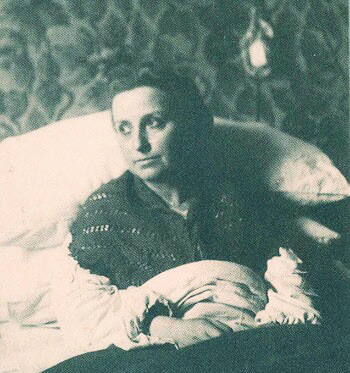
The revelations of Maria Valtorta, above, go along with the teachings of Vatican II Either they did not carefully read the writings of Maria Valtorta, which is hard to imagine given the seriousness of the matter, or they were accomplices in spreading a work that has serious errors in matters of the Faith.
First, I remind the reader that the Poem of the Man God was placed in the Index of Forbidden Books by the Supreme Congregation of the Holy Office in 1959 (click here). Although Paul VI shut down the Index in 1966, the accusations against the book were never rescinded or updated. Therefore, the censure against the errors in Valtorta’s work effectually remains.
What is presented here is a commentary on her work that points out those errors, some of them heresies. It is not a personal attack or judgment on her intentions; rather it demonstrates what was unacceptable in her work that caused it to incur an ecclesiastical censure prior to Vatican II.
Some of the principal errors against the Faith found in the Poem of the Man-God follow.
1. ‘Divine Revelation did not end with the last Apostle’
The author assures us that divine Revelation continues and that she is the one who continues it. She affirms that Christ himself calls her “my Mary John,” that is, He names her a kind of “sister” of St. John the Evangelist who would continue his mission. She asserts that she has been charged with setting out and explaining Revelation and admits an evolution of the already defined dogma. This dogmatic evolution is condemned by the Holy Church.
According to Church teaching, the divine Revelation that began in the Old Testament closes and ends with the Apocalypse of St. John, who writes: “For I testify to everyone who hears my words of the prophecy of this book: If any man shall add to these things, God will add to him the plagues described in this book, and if any man shall take away from the words of the book of this prophecy, God shall take away his part from the tree of life.” (Apoc 22: 18-19)
It is against Church teaching to assert that Revelation may continue through other “prophets” or be explained differently from what has already been defined dogmatically.
Therefore, no Catholic can accept such an “extension of revelation” by a “seer,” even if she herself is ignorant of the doctrine of the Church on this matter. She claims to have received everything she describes and narrates as a revelation, not only on secondary points, but to clarify the Gospels themselves. Thus, until her writings the Church would not have had a clear understanding of them.
According to Valtorta, Christ himself would have told her: “This work [of yours] is to illuminate certain points that various circumstances have covered with darkness and, thus, formed obscure areas in the luminosity of the evangelical books and points that seem fractured. And for these obscure points between one episode and another, indecipherable points, this is the key to understand certain situations exactly.”
Thus, not only are we given the impression that something is missing from Revelation and is rectified by Valtorta’s revelation, but also that this announcement comes from the mouth of Christ himself.
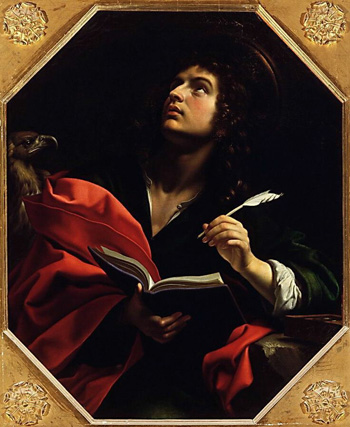
Valtorta imagines herself called to complete the official Revelation in a way that contradicts St. John It is Christ, according to Maria Valtorta, Who assures us that her writings are inspired by the Holy Spirit and Who exhorts readers to listen to the one He often calls His “little John” or “Mary John” as a way of linking them together. This open disregard of Church teaching that divine Revelation ended with the last Apostle is blatant and contradictory, especially when the “seer” affirms it is Christ himself Who is contradicting Church doctrine.
For example, she says that Our Lord admonishes those who read her work with objections:
“If they object that Revelation ended with the last Apostle and there would be nothing more to add: And what if I wanted to reconstruct the picture of My divine charity like one who restores mosaics by renovating damaged and missing parts, and that I am replacing the missing parts, and that I wanted to do this in this century when the human race is plunged in darkness? … In truth, you should give thanks to me, because I have added new lights to the light that you have which is no longer sufficient to see your Savior.” (p. 887 et al)
It is true that someone can claim to be enlightened by God and assure us that she is speaking to Christ himself and that these are revealed things. What is inadmissible is for heresies and extravagant things to be accepted by persons learned in religious matters and, I repeat, by priests who should know Church teaching.
According to this, the Holy Church has waited for centuries for Maria Valtorta to appear so that the Church would continue and reform the Gospel! And since this is the case, then everyone who would not accept her “divinely revealed” explanations would be sinning. (2)
The editors of this Spanish edition, it should be noted, have included copious footnotes throughout the work observing that Valtorta’s teaching complies with that of Vatican II… The post-conciliar Church, thus, promotes the Poem of the Man-God by Valtorta as a living example of the evolution of dogma and as an aid to spread the post-Vatican II heresies.
2. Mary is ‘the second-born of the Father’
In Volume 1 of the Man-God, Maria Valtorta affirms that the Virgin Mary is, after Christ, “the second-begotten of the Father.” (p. 3)
This is a heresy, since Our Lord Jesus Christ is the one and only begotten Son of the Father, consubstantial with Him, as taught in the Credo: “I believe in Jesus Christ His only Son.” The “first begotten of all creatures” is also Christ, the Word Who assumed human nature.
The Church, who recognizes the many glories of Mary and her greatness above all human creatures, never gave this title or prerogative to the Mother of God. There can be no “second-begotten” of the Father, which would make Mary equal to the one and only Son. If Christ is the only Son, it is understood that a second cannot exist.
3. Valtorta holds unconditional universal redemption (3)
Maria Valtorta says that Jesus himself revealed to her that:
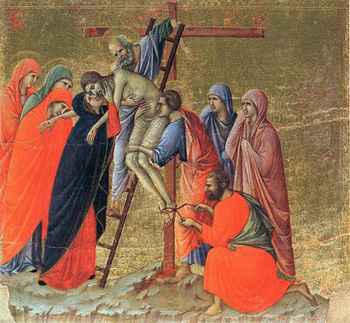
For the fruits of the Redemption to be effective man’s adhesion is required “The Jesus-Mary couple is the antithesis of the Adam-Eve couple. The first is destined to annul everything that Adam and Eve did, and to return the human race to the point when it was created, rich in grace and in all the gifts bestowed by the Creator. The human race has found a total regeneration through the work of the Jesus-Mary couple who are its new founders. The past time has been erased. Time and human history really begin from the moment when the new Eve, by a change in Creation, drew from her womb the new Adam.” (p. 544)
The doctrine of the Holy Church is, as we know, “Christ our Redeemer substitutes himself for us in expiation. … But man, in order to have the effect of the salvation wrought by Christ, must adhere to Him freely by Faith and Charity.” (Diccionario de Teología Dogmática, Pietro Parente, p. 312)
Thus, although we know that Christ died for all, not all men are saved, as the Council of Trent explains in defining the doctrine of the Eucharist, but rather only those whom Trent calls the “many.”
4. ‘The Redemption is consummated by Mary’
Maria Valtorta affirms that Christ revealed to her that the Redemption was not consummated by Him, but by His Mother. (p. 600) Here is another heresy because, although the Church views Mary as the “co-redemptrix”, it has never taught that she “accomplished” the Redemption. This was done by Our Lord on the Cross. But Valtorta says that Jesus told her:
“Everyone thinks that the Redemption ended with My last breath. No, it did not. The Mother ended it, by adding her triple torture in order to redeem the triple concupiscence.”
It is unnecessary to point out that this heretical statement is supposed to have come from the lips of Christ himself.
As for the “triple concupiscence” that, according to Valtorta, Christ says Mary suffered and conquered in order to consummate the Redemption, we note that throughout her work Valtorta affirms that both Our Lord and His Mother suffered “terrible carnal temptations” during their lives, which they had to fight hard to overcome.
We will look at this blasphemy more closely on in the next article.
- El hombre-Dios, (Poem of the Man God) used in this review is the 11 vol. work published by Centro Editoriale Valtortiano, 1987. We will quote the pages in the text as we will use them throughout the articles.
- Pages 879 onward in the work contain in particular the heresies regarding Revelation exposed by Valtorta in the chapter entitled “Despedida de la Obra.”
- Pp. 544, 788.
Errors of Maria Valtorta – 2
A Generalized Sexual Obsession
Anselmo de la Cruz The first article pointed to some major doctrinal errors in The Poem of the Man-God by Maria Valtorta. Here we will look at two more problematic claims by the visionary whose work was condemned by the Church.
Original sin was the sexual act
Valtorta claims the original sin was the sexual act performed by our first parents (pp. 98, 254, 257, 258). (1) These are long “revelations” that Valtorta supposedly received on the topic, but here we will present only the basic elements of this heresy.
She claims that at first Adam and Eve did not know how to engender children by means of the sexual union. Instead, procreation was to take place by the special intervention of God, without sexual union. Knowledge of this union was forbidden to Adam and Eve, and this was the bait used by the Serpent to tempt Eve.
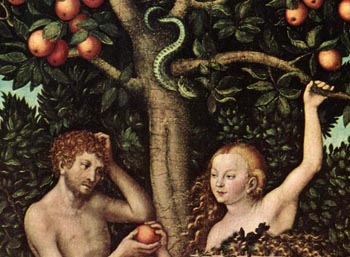
In Valtorta’s new version of original sin, it was a sexual temptation In summary, Valtorta says: “Eve approached the tree of good and evil to come to know this mystery, these laws of life. … She came disposed to receive this mystery, not from the revelation of the pure teaching and divine influence, but of the impure teaching and satanic influence.”
At the tree Eve finds the Seducer, “who sings his song of lies to her inexperience, to her beautiful virginal inexperience, to her badly guarded inexperience. ‘You think there is evil here? No, there isn’t. God told you because He wants to keep you as slaves under His power. You think you are king and queen? You are not even as free as wild animals. Animals can love one another with true love. You cannot. Animals are granted the gift of being creators like God. Animals generate little ones and see their families grow as much as they like. You do not. You are denied this joy. Why make you man and woman if you have to live thus? Be gods. You do not know the joy of being two in one flesh, which creates a third one and many more.
“‘Do not believe God when He promised you the joy of posterity seeing your children forming new families, leaving their father and mother for their families. He has given you a sham life: real life is to know the laws of life. Then, you will be like gods and will be able to say to God: We are equal to You.’”
Suffice it to add that the obscenities in some of Valtorta’s descriptions of the Devil tempting Eve are sufficient to awaken doubts even in the most ignorant about the nature of her supposed “divine revelation” on Creation.
Church doctrine on original sin does not teach that it involved the sexual act. According to Catholic teaching, Adam and Eve were not unaware of the use of marriage, since, before his fall, Adam said, “a man shall leave his father and mother, and shall be joined unto his wife, and they shall become one flesh” (Gen 2: 24).
According to the Council of Orange, it was disobedience that caused our first parents, created in full integrity, to lose sanctifying grace and other gifts. Among these consequences came disorder in the concupiscence; that is to say, before the fall they suffered no disordered desire for sensible pleasures, including the sexual. The original sin was an act of disobedience that had no direct link with sexuality, which is set out in many sound Catechisms or accessible works like the Teología del Dogma Católico [The Theology of Catholic Dogma] by Fr. J. Abarzuza (p. 644).
But Valtorta insists again and again on her new version of original sin with so many details that suggests she had a morbid inclination to deal with sexual matters.
Our Lord & Our Lady suffered sexual temptations
Valtorta also affirms that, throughout their lives, both Our Lord Jesus Christ and the Blessed Virgin suffered terrible sexual temptations, which they had to overcome through hard struggle.
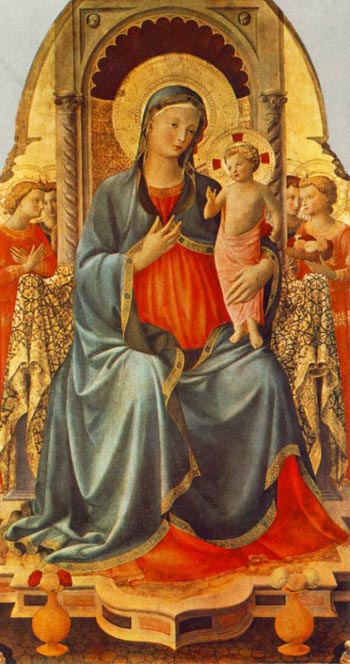
Our Lord and His Mother were free from the effects of original sin and suffered no disordered inclinations In this statement, which she claims is from a revelation made to her by Christ himself, we see Valtorta’s total ignorance of Catholic dogmatic teaching on elementary points.
Neither Jesus Christ, God made man, nor the Blessed Virgin could suffer sexual temptations because they lacked what the Church calls the fomes peccati or inclination toward evil that are the effects of original sin. Christ, as the Son of God, was as a man exempt from such an inclination, since He was without sin.
The Blessed Virgin, who was destined to be the Mother of God by the grace of her Immaculate Conception, was conceived without sin; therefore, she did not have consequences of original sin. Being spotless, she was incapable of sinning, according to Church doctrine.
Both God the Son and the Mother of God were, thus, without original sin and free from the inclinations toward evil that afflict the rest of the sons of Adam. Therefore, they were not and could not be tempted to do evil. So, it is impossible for them to have been tempted toward sexual sins, as Valtorta repeatedly insists, putting stories of these temptation in the mouth of Christ himself.
Let us briefly set out the teaching of the Holy Church on this matter in words from Fr. Abarzuza’s magnificent compendium on Theology:
- “Christ was free from all sin” (defined doctrine of the Holy Catholic Faith);
- “By virtue of the Hypostatic Union, the human will of Christ was always and everywhere subject to the divine will. … Christ could not sin, nor was there in Him any capacity to sin. He was absolutely flawless” (Theology of Catholic Dogma, J. Abarzuza, pp. 737-38).
Church teaching is clear about the impeccability of Christ and Mary His Mother. Further, any faithful Catholic can easily understand and accept that Christ, as the Word Incarnate and Second Person of the Divine Trinity, could not have any evil inclination or be tempted to do evil. The same is said of the Virgin Mary by virtue of her Immaculate Conception and divine motherhood.
In her ignoble stories of the alleged sexual temptations that Valtorta claims were reported to her by Christ himself, there are many details that offend the Divine Person of the Savior and His Blessed Mother. The Poem of the Man-God makes us think of Jesus Christ Superstar and other profane works created to mock the divinity of Our Lord.
- El Hombre-Dios, (Poem of the Man God) used in this review is the 11 vol. work published by Centro Editoriale Valtortiano, 1987. We will quote the pages in the text as we will use them throughout the articles.
Errors of Maria Valtorta – 3
Poem of the Man-God:
Dangerous & Unacceptable for Catholics
Anselmo de la Cruz It would seem that after reading the aberrations in the previous article, no further comment would be needed regarding the merit of The Poem of the Man-God. Still, to open the eyes of readers, we offer a few more examples.
Here we quote what Maria Valtorta says Our Lord himself revealed to her about His temptations to impurity: “Satan was anxious above all to drag me into impurity … Satan’s attempt aimed at this capital point in order to conquer Me” (p. 285).
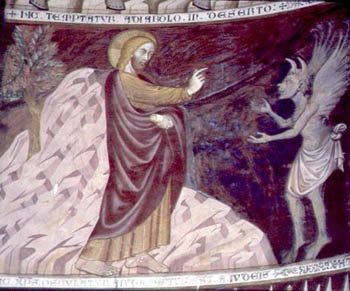
Valtorta adds sexual temptations during Christ’s life to those He suffered in the desert Valtorta adds the temptation to impurity to those temptations that the Gospels tell us Our Lord underwent in the desert. In one conversation with Judas, Valtorta has Our Lord speaking about the supposed sexual temptations He experienced.
Judas says to Jesus: “Jesus, have you ever sinned?”
Jesus would have replied: “I never wanted to sin. … I am 30 years old, Judas, and I have not lived in a cave or on some mountain, but among men. And even if I had lived in the loneliest place in the world, do you think temptations would not have come to Me there? … We all have within us good and evil. We all carry everything within us …” We note here that Christ is presented as a man, who has within himself the seed of evil coming from Original Sin.
Our Lord supposedly continued, describing the sexual temptations of every man, including himself:
“When you are hungry … the simple thought of being without food will bring back the pleasant smell of food that makes your mouth water. So, the temptation is as strong as that desire, Judas. Satan makes it more intense, more real and more alluring than the accomplished act. Further, the act satisfies and at times nauseates; whereas temptations do not subside, but like pruned trees, they grow stronger and stronger.”
“And have you ever yielded?” Judas asks.
“No, never.”
“How did you manage?”
“I said, Father, lead Me not into temptation.”
“What? You, the Messiah Who works miracles, and You ask for help from Your Father.”
“Not only for help: I ask Him not to lead Me into temptation.”
In this episode, there are three issues to consider, in addition to what has already been said on the impeccability of Christ, which made Him unable to be sexually tempted (see Article 2).
1. Valtorta distorts the Gospel. In none of the Four Gospels do we read about additional temptations other than the ones Our Lord experienced in the desert, let alone any words about sexual temptations.
2. She tries to convince the reader to accept these sexual temptations of Christ by recalling the final words of the Our Father, which Jesus taught to His disciples when they asked Him how they should pray. In it He said to lead us not into temptation, as if the “us” in the petition also included Christ. The Lord’s Prayer contains petitions appropriate for men, but not for Christ, who is God and man.
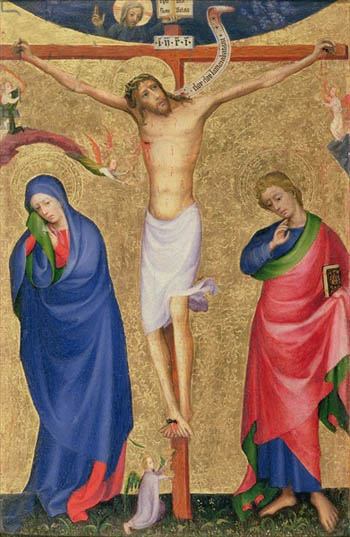
Christ’s last word, according to Valtorta, was ‘Mummy’ 3. Throughout the work of Valtorta one observes a sinuous intent to make Christ appear as a mere man, subject to the miseries of man – including that of the flesh – at the expense of His Divinity. One could say that the work was written by Jews, since the tortuous and even at times sarcastic style is an artifice generally employed by enemies of Christ. Mockery is evident, under the guise of sentimental fantasy and sickly sweetness.
For example, for Christ to call the Blessed Virgin – “mummy” (in the English translation) and “mamacita” in the Spanish – is at the least tasteless and lacking in due reverence. We repeat, it is a kind of mockery of Our Lord and Our Lady.
It seems to us disrespectful to continue transcribing the stories of the temptations of the flesh that Valtorta attributes to Christ and the Blessed Virgin, falsifying the Gospel, as when she pretends Our Lord was tempted by a retinue of scantily clad women, who were told by Annas to lasciviously approach the Lord during His stay in his house during the Passion.
These falsifications of Scripture abound in the Poem, making it a real danger for those ignorant of the Scriptures.
Other aspects of the Poem
In addition to the numerous falsifications of Scripture, Valtorta adds new facts – for example, that the last word of Christ on the Cross was “mummy“ and not what appears in the Gospel – there are doctrinal questions that follow the heretical pattern of Vatican II. They include the following:
- Misconceptions about the nature of the priesthood;
- Errors regarding the words of Consecration that Valtorta puts in the lips of Christ, different from the formulae dogmatically pronounced by the Holy Church for the realization of this Sacrament;
- Falsehoods about the doctrine of salvation and sanctification, because she asserts that Our Lord revealed to her that “the Commandments alone suffice to sanctify.” This opposes the doctrine that a man must belong to the Catholic Church in order to be saved, and she pretends that the gifts of the Holy Spirit that produce holiness can be given outside of the Church;
- Errors on the nature of the Church, with the claim that Christ told her that everyone is part of the same people of God, both believers and non-believers. This notion of “people of God” is the doctrine of Vatican II, as we know, made to favor the Jews in particular and the Masonic theory of the equality of religions.
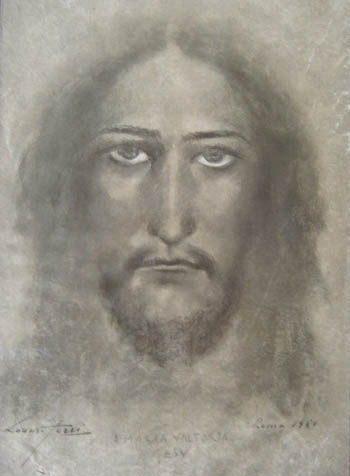
A sketch of an occult and whining Christ by artist Lorenzo Ferri, who was directed by Valtorta A more comprehensive refutation of the Poem of the Man God – a significant title since it signifies that the life of Christ is imaginative poesy and not history – would call for a large, much heavier to read volume. It is our hope that the Catholic sense of the faithful may be wakened by our short criticism of the perversity of Valtorta’s revelations. The purpose of this commentary has been to warn those of good faith, who are enthused by these sentimental accounts of the life of Christ, from falling inadvertently into the trap that constitutes this work.
Clearly the Poem is a great help for the post-conciliar progressivists. This cannot be denied. It includes their doctrines, theories and heresies and favors religious Judaism, employing many of the same terms as those used by the Vatican II to incline Catholics to “love Israel,” giving them a course on Judaism like what they find in the New Catechism, under the pretext of being true revelations made to Maria Valtorta.
It is said that a priest ordered her to write her autobiography; if it were written and published, it would be interesting to read such a work. We lack much of the data needed to have a complete picture of the motivations of someone who so faithfully foretells the doctrinal guidelines of Vatican II. Obviously, the numerous quotations from the Council cited by commentators on the work in footnotes suffice to demonstrate that the work of Valtorta is a boost to the heresies of Vatican II and the later teachings that emanated from it.
God willing, these pages will open the eyes of those with good faith and eager for spiritual reading, who seek a nourishing food, but will find nothing here, except a deftly spread poison that will break down faith in Jesus Christ, true God and true Man.
Conclusion
After thoroughly examining the work in the light of the dogmatic teaching of the Holy Church, we conclude the following:
- The work is heretical in key points regarding the dogmatic teaching of the Church; (Article 1)
- It is obscene in its descriptions, which promote heresies, such as its pretension that the Original Sin was the sexual act; (Article 2)
- It favors the new heresies that came from Vatican II;
- It promotes the thesis favoring Judaism upheld by the post-conciliar progressivists;
- It has the censure of the Church, which placed it on the Index of Forbidden Books in 1959. (Article 1)
For these reasons, it is unacceptable and dangerous for Catholics and should be rejected.
